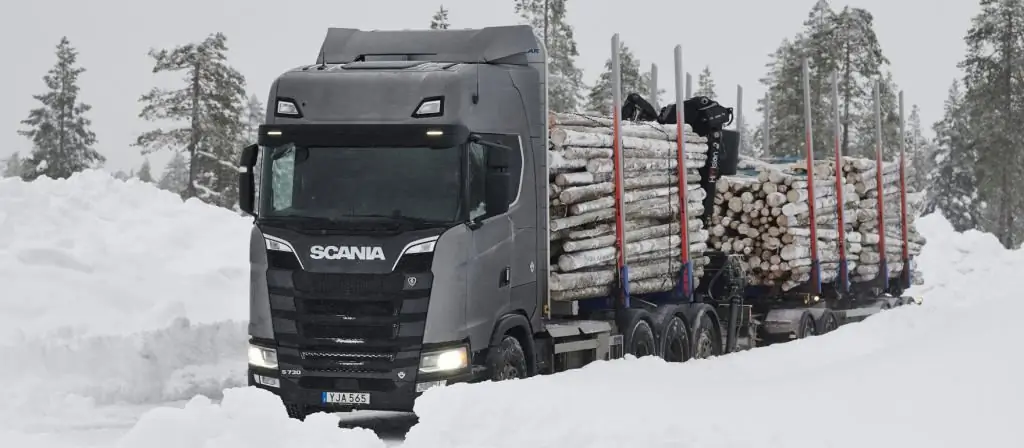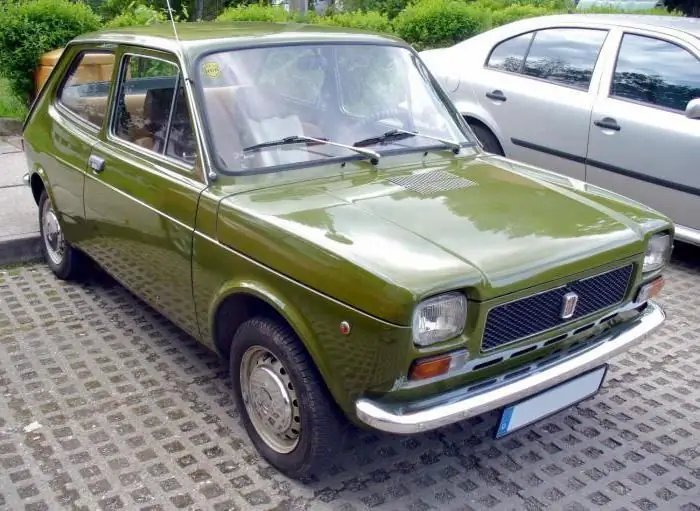2025 Author: Erin Ralphs | [email protected]. Last modified: 2025-01-22 21:14:11
Mitsubishi Pajero can be safely called one of the titans among modern large frame SUVs. Judging by the number of reviews, Mitsubishi Pajero confidently maintains its position in the Russian market. And this is despite the obvious conservatism of the model.
Pajero 4
The fourth generation of the car was released back in 2006, and 12 years is a long time for a modern car, even for an SUV. If we take into account that the fourth generation is often called a deep restyling of the third generation, then a certain archaism of the car becomes obvious. Hence the contradictory reviews of Mitsubishi Pajero owners.

Not everyone needs impressive cross-country ability, often people demand first of all representativeness, comfort in the cabin and peppy behavior on the pavement. But the last two points are not programmatic for the model, which often leads to dissatisfaction. But, in addition to, in fact, the concept of a car, like an SUV, there are a number of nuances, that is, not obvious advantages and disadvantages of Pajero. We will stop on them.more.
Body
The five-door Pajero has impressive dimensions. The length of the machine is as much as 4900 mm. The vehicle has a very spacious interior and a huge trunk, the dimensions of which satisfy the vast majority of owners. The car is considered a frame, but this is not a classic separate frame, but a combination of spar elements built into the body and a supporting body structure. This made the car lighter and more modern, and improved handling.

But according to reviews, Mitsubishi Pajero sometimes lacks body rigidity on off-road, the car becomes too creaky. And in winter, on a snowy road, the constant mobility of the body leads to loud sounds due to flying ice. But at the same time, it is not necessary to talk about the low reliability of the body of the fourth Pajero. He is very tenacious and has almost no vulnerabilities. The exception is the rear bumper, which is attached in such a way that there is a certain risk of tearing it off in serious off-road conditions.
Many owners are dissatisfied with the quality of the fuel tanks, which are very susceptible to corrosion, so it is necessary to carefully treat them with an anti-corrosion agent immediately after purchasing a jeep. In terms of body structure, the peculiar shape of the wheel arches raises questions, inside of which there are cavities where dirt steadily accumulates. The quality of the paintwork of the body is mediocre. According to reviews, Mitsubishi Pajero is very easy to scratch. But the paint does not peel off, and if desired, scratches can be polished.
Salon
Is one of the most controversial places in the design of the car. Objectively, the level of finishing and equipment of the car does not fully correspond to its price category. And here already car owners are divided into two camps. According to some reviews, Mitsubishi Pajero is too archaic, it is not worth the money. Other owners, usually non-tarmac enthusiasts, are more restrained and point out that the interior is not a defining characteristic for a car of this class. The main drawback of the Pajero interior is the general outdated ergonomics.

So, the driver's seat has to be reconfigured every time, but still it is uncomfortable for tall people, the steering column is not adjustable. The on-board computer is extremely primitive, and the air conditioner is difficult to adjust to specific requirements, although it is powerful. Noise isolation is mediocre, and with ajar windows in the cabin it is very noisy due to the specific aerodynamics. At the same time, in the half-open form, the door windows dangle slightly, which is simply undignified for such an expensive car. However, the car has an excellent stove and bright interior lighting. The leather trim, while not looking very expensive, is durable and strong.
Engines and transmission
The two main engines of the fourth Pajero are a three-liter 173-horsepower petrol and a 3.2-liter 200-horsepower diesel. According to reviews, Mitsubishi Pajero with a diesel engine has excellent fuel consumption. On the highway, he eats only 10-11 liters per hundred kilometers. Torque exceeds that of a gasoline enginemore than twice. The engine of the car is quite the vast majority of Mitsubishi Pajero owners 3.2.

Reviews of the gasoline engine are more restrained. For off-road, it is quite enough, but lovers of rapidly starting from traffic lights call it not corresponding to the mass of the car. If you operate the car in a measured mode, then the engine power is quite enough. The automatic transmission of the car is reliable, but a number of owners complain about some "thoughtfulness" of the box. In addition, off-road "automatic" is always inferior to "mechanics", which allows you to better feel the car.
Suspension and agility
Expectedly, most owners find the car harsh. However, this has its advantages. Although the car is quite archaic, it has excellent maneuverability and turning radius for its class. Moreover, most owners confidently declare that a laden Pajero is softer and handles much better than an empty one. The car has excellent visibility from the mirrors and rear view camera. Therefore, the need for parking sensors almost disappears.

Off-road performance
Along with reliability, this is the main plus of the car. All owners note the excellent cross-country ability of the jeep even on standard tires and without a rear differential lock. And Pajero in Instyle off-road performance with a differential lock can be called one of the best production SUVs in the class.
If we talk about the car inIn general, people who operate it exactly like a jeep write positive reviews in the vast majority of cases. Mitsubishi Pajero 3.0 is a bit weak. But the diesel option is one of the best in class for those motorists who do not limit their movement to the city.
Recommended:
Scania timber carrier: a brief overview of the brand and its models

Scania timber carrier is one of the most demanded powerful trucks in its class not only in Russia but also in Europe. We will talk about this well-known car to many in the article. These long lengths optimally combine both high quality components and an adequate price
Volkswagen Passat Variant. Brief overview, characteristics and reviews

Volkswagen Passat Variant is a station wagon based on the classic Volkswagen Passat sedan. The model is designed primarily for families, and it is worth saying that it is popular. The Variant has retained all the best qualities of the regular Passat: a high level of comfort, a spacious and comfortable interior, a roomy trunk, top-level safety, excellent performance and much more. Let's take a closer look at this model
A brief overview of the Toyota FJ Cruiser model

During the auto show, which was held in February 2005 in Chicago, officially debuted "Toyota FJ Cruiser" - the sixth SUV from this Japanese company, designed exclusively for the US market. A year later, the model was launched on the assembly line of a plant in Texas. The car stood out for its extraordinary design, made in retro style, and very quickly gained a large number of fans
A brief overview and history of the car Fiat 127

The Fiat 127, the photo of which is presented below, has been mass-produced for twelve years. It was built on the basis of the obsolete 850th modification from this manufacturing company
A brief overview of the car "Honda S2000"

The car "Honda S2000" began to be produced in 1999. The model was developed and presented on the occasion of the half-century anniversary of the Japanese manufacturing company. During the history of serial production, this sports two-seater has acquired millions of fans in all corners of the planet

